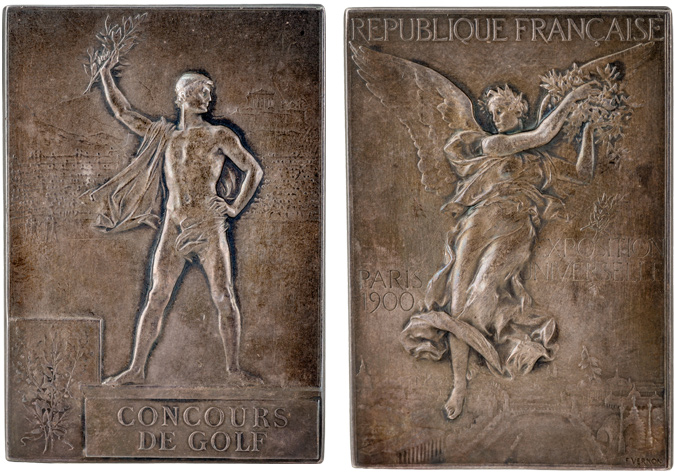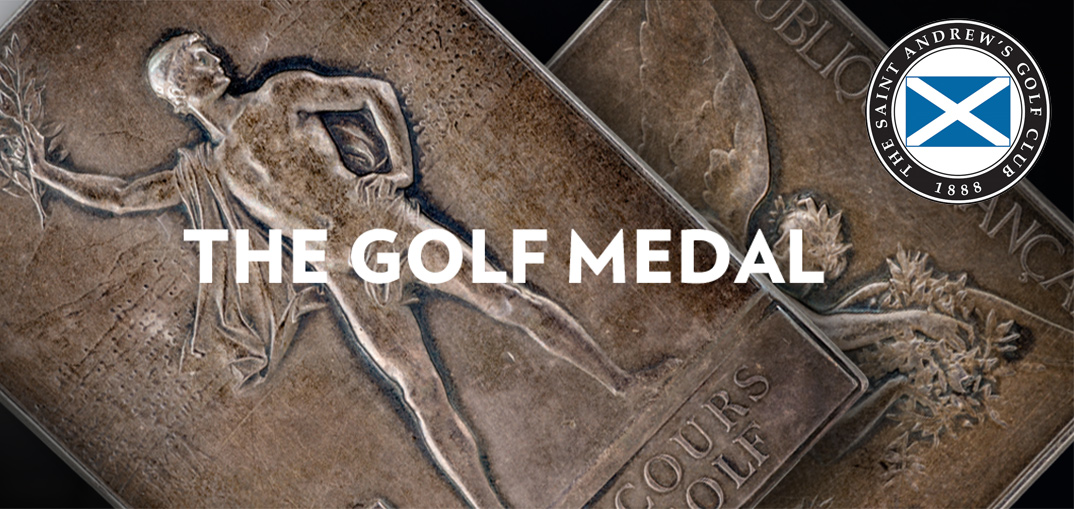Silver medals to the winners and silver plated bronze to the runners up.
The events of the 1900 Olympic Games were divided into 10 groupings each controlled by a separate committee. The committees were authorized to purchase trophies (objects d’art) and up to five medals for their competitions. Most medals surviving today are either silver or silver-plated bronze, hence it is generally believed that most committees followed the example of the 1896 games in Athens which awarded silver medals to the winners and silver plated bronze to the runners up. Medals were not routinely awarded to third place finishers. It was not until 1904 that the practice of awarding gold medals to all winners was established. The 1900 medals were designed by Frederic Vernon and struck at the Paris mint. But the medals were not ready in time and were not available until near the end of the games. As a result, many competitors had already left France, so many winners and runners up never received their medals.
Photographs of the medal and historical summary courtesy of Professor William Anderson, Phd. (Ret)

This solid silver medal was cast for the golf competition at the 1900 Paris Olympic Games. It is known that the initial intention of the committee responsible for the golf competition was to cast medals for three events… individual men’s, individual women’s and an unofficial event played with assigned handicaps. Because the golf competition ran over budget and medals had not yet been cast at the time of the event, it is not known if three solid silver medals were ultimately cast nor if they were ever awarded. It can only be said that, while it is quite possible that the above pictured medal was awarded to Charles Sands some time after his victory at Compeigne, this will never be known with certainty.
Professor William Anderson purchased the medal online from an antiques dealer in the New York area in 1999.
